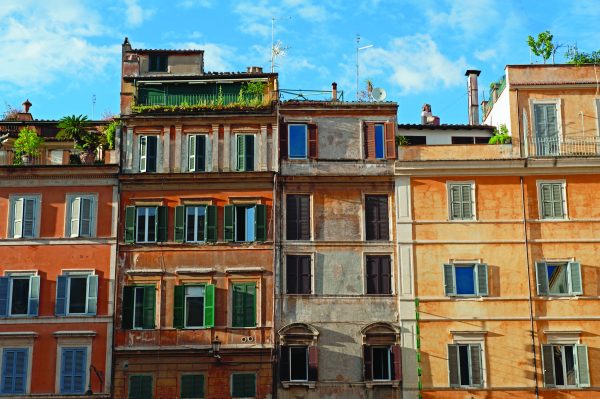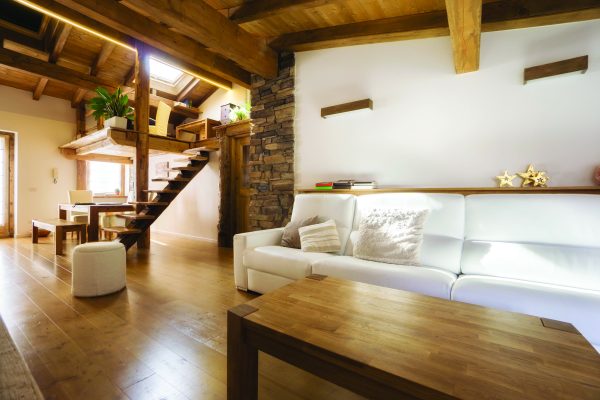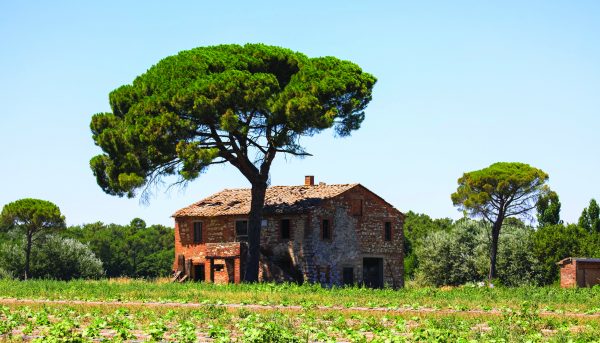Bringing an old ruin back from the dead and creating the bespoke house of your dreams has long been a popular adventure for overseas buyers in Italy. Fleur Kinson says it’s still a great option.

In the last forty years, many thousands of non-Italians have bought and rebuilt or restored a dilapidated property in Italy. Some have been very hands-on, living in and around the property while it’s being worked on, and even doing some of the work themselves. Others have stayed at home and employed local project managers to oversee the building work. Some restoration projects have been modest, some have been gigantic. But thousands of people have done one, and if it’s your dream too, so can you.
It’s easy to imagine why it would be anyone’s dream. Not only do you end up with a history-rich house in Italy, and often – although not always – at a cheaper overall cost than buying one ready to move into, you get to style the place yourself. Depending on the scope of the restoration project, you might be choosing the layout of rooms as well as the building materials, fittings and finishings. It’s not often that you get to see your exact taste and requirements made into an enduring physical structure as big as a house. There’s huge satisfaction in doing a restoration project, especially with the added romantic thrill that you’ll be bringing a neglected old property back to life.
Another reason restoring has been such a popular option for buyers in Italy concerns the small matter of location. Quite a few people have figured out that it can be easier to find your ideal location than it is to find your ideal home in your ideal location. If you can find your perfect hill, valley or meadow with your perfect view, you can probably turn any old building with access to that view into a wonderful home – regardless of its original use. And if the building doesn’t face the view, you can always knock it down and rebuild it so that it does!
Are you built for this?

The reasons for wanting to restore a home in Italy are many and sound, but restoring isn’t for everyone. From the outset, you’ve got to be able to accept uncertainty. Some things might take longer than you expect, plans sometimes have to be adapted along the way. Some people love imagining an end result, aiming for it but welcoming the problem-solving excitement of slight deviations if they become necessary. Others just want to know exactly what they’re going to get right from the start. How strong is your sense of adventure? How patient can you be when you have to be? Small restoration projects might take only a few months, but large ones might take years to complete. If what you really want is a traditional-looking home in Italy that you can start using right away, you should buy one that someone else has already restored.
Note that restoration projects come in a vast array of shapes and sizes. You can choose how much adventure and uncertainty you want to have. You might knock down an old ruin and completely rebuild it to your own design. Or you might want to start with a standing structure – four walls and a roof – and then fill out that basic shell. You might buy a large building and restore just one part of it to fulfil only the size of the home you need. Or you might buy a nearly habitable house and merely tweak it up to your desired level of comfort. If you want to have creative input on a home in Italy, you can do it on a scale large or small.
Traditional face, modern heart
Depending on the region you’re in, you’re likely to face certain restrictions on what you can and can’t do to local buildings. These restrictions are there to preserve the look and character of the country and most restorers don’t find them onerous, because the very thing they want is a traditional-looking Italian home. Most buyers love to use local building materials, resurrect period details and preserve a classic exterior, but to also include every modern comfort and convenience inside.
One of the great advantages of restoring an old home yourself, rather than buying one that someone else has restored perhaps a couple of decades ago, is that all the internal systems and utilities you put in will be up to the very latest standards. Your plumbing, heating, electrical wiring and so on will be state-of the art. You might also be incorporating eco-efficient measures or devices that were uncommon many years ago. Italy gets a great deal of sunshine – why not make use of that with photovoltaic technology to heat your water and so on?
Being able to put in the most modern tech is a particular advantage when you’re knocking down an old structure and entirely rebuilding it. Especially so when it comes to earthquake-proofing technology. Quake-proofing has been a legal requirement on all properties built in Italy for several decades, and this applies to all old properties restored for habitation too. If any property you restore has not yet been quake-proofed, you’ll have to include various strengthening techniques in your restoration. And it’s much easier to meet a higher level of seismic protection when you knock down and rebuild your home from scratch than when you strengthen a standing building.
Keeping costs down

Because restoration usually involves some uncertainty, costs can be a worry for many buyers – specifically, they worry that their project might end up going over budget. Some buyers get round this anxiety by agreeing a ‘fixed-price contract’ with their agent at the time of buying. With one of these, the full cost – and the full timescale – of all restoration work is agreed in advance. Labour, materials, taxes… all will be covered by one pre-agreed and unchangeable price.
But when and where a fixed price agreement isn’t available, there are all sorts of ways that buyers can guard against costs escalating during the course of a restoration project. The simplest way is to focus on saving money right from the start. A chief tactic for this is to buy only as much home as you need. The number of square metres of floor space you restore is usually the biggest factor determining your final cost. If location or other reasons tempt you to buy a place much larger than you actually need, consider restoring only as much of it as you need. You can always restore more of it later if finances allow.
You can also guard against overspending by being aware, before you buy, of the kinds of things that tend to be more expensive to fix. If you want to restore a standing house rather than knock down a ruin and rebuild it, choose one that still has foundations, load-bearing walls and a roof – as these three things are generally the most expensive to replace. Always pay close attention to walls when choosing a property, as the state of these often determines whether it’s best just to knock the place down and rebuild. Estate agents are generally very good at advising you on such matters when you first view a property.
Building excellence
One thing that should reassure you when it comes to restoring property in Italy is the nation’s extremely high standards of building craftsmanship. You’re highly unlikely to meet with lazy or slapdash building work here. Most foreign restorers in Italy report being hugely impressed by the quality of work and level of commitment shown by the local people who restore their property. All the old crafts of working with traditional materials are alive and well in Italy, and the artisans who make their livings from this aspect of Italy’s heritage are very proud of their workmanship.
Making buildings beautiful and constructing them well are values that have long run deep in Italian culture. The attractiveness of the nation’s buildings is of course one of the many reasons that so many of us want to own one. If buying and restoring an old Italian building and making it a bespoke home is your dream, it’s a dream you can realise, and it’ll be an adventure likely to bring many kinds of satisfaction along the way.
